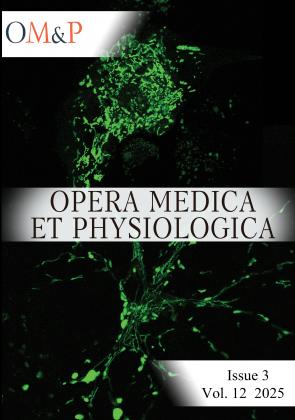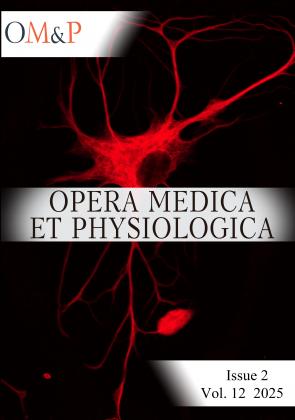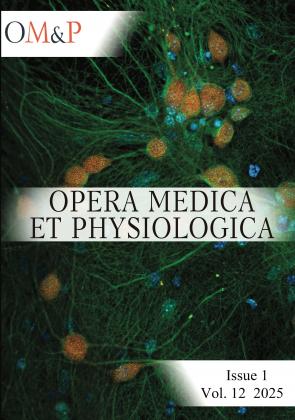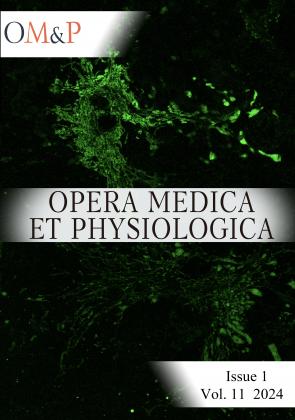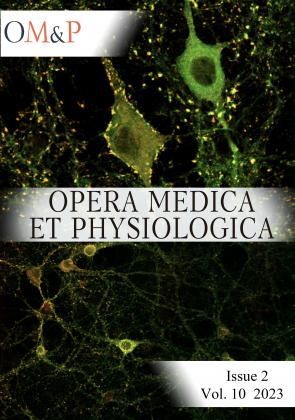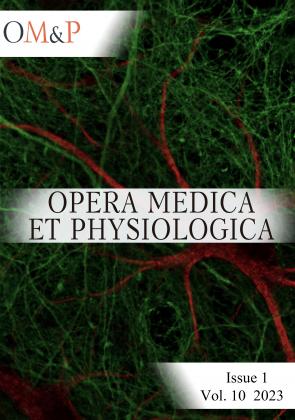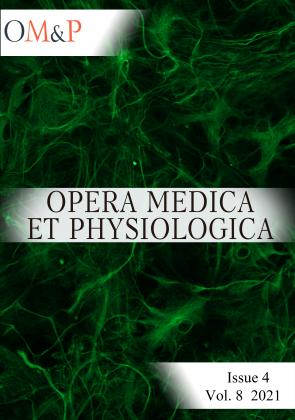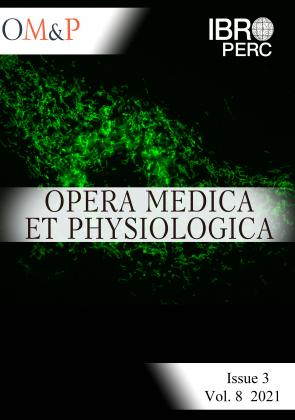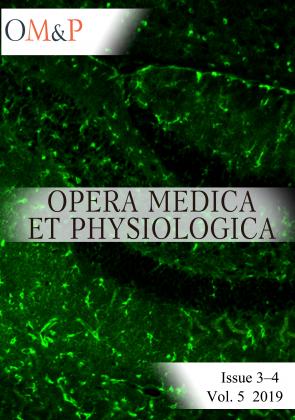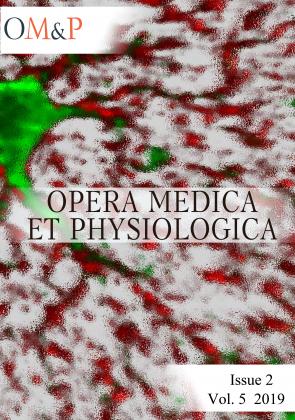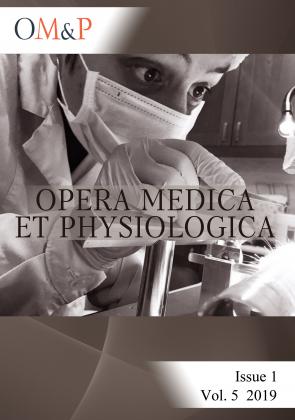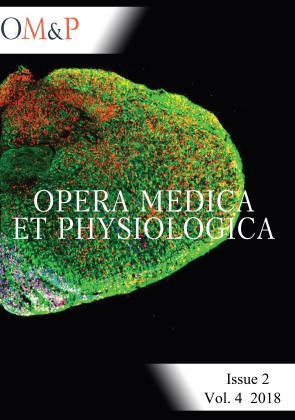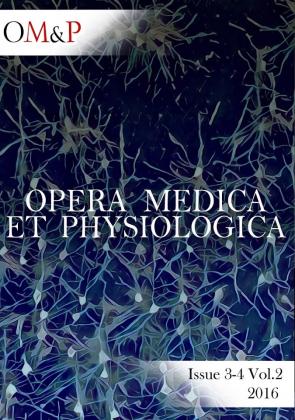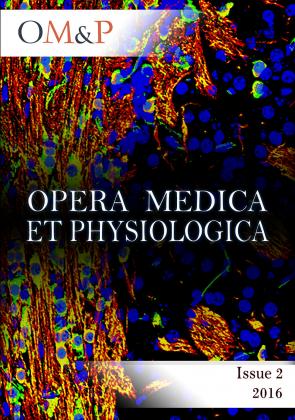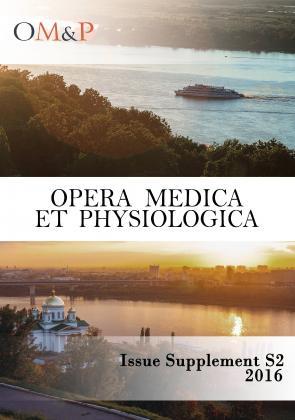Issue 3 | September 2021
In probabilistic conditions, people choose low-payoff alternatives on some trials, thus failing to maximize their payoffs. We suggest that such behavior implicates exploration of task rules by choosing risky options instead of exploiting more rewarding alternatives. We hypothesized that exploration would affect brain responses to feedback. Further, a shift to exploration develops gradually and, therefore, a decision to make an exploratory choice may be observed on trials preceding risky choices. We investigated beta power (16–30 Hz) in the magnetoencephalographic data from 62 healthy participants performing a two-choice probabilistic gambling with monetary gains and losses. The effects were found at 600–800 ms after feedback onset in frontal, central and occipital brain regions. On trials preceding risky choices we identified a decrease in beta power which implies a change in decision-making strategy and a shift towards cognitive flexibility and exploration. An increase in beta power during risky decisions indicates that reward learning mechanisms are implicated. Increases in beta power following losses in risky choices indicates at the process of updating the internal representation of the task. In summary, current findings reveal that the outcomes of exploratory trials are processed differentially, while there is no evidence of such processing on exploitatory trials. This corroborates the hypothesis that exploratory choices represent active probing into the surmised task rules. Current findings also suggest that the processing of outcomes preceding the exploratory trials is altered in such a way that subjects override their intention to use the utility model and reset their behavioral strategy.
| Attachment | Size |
|---|---|
| 499.58 KB |
Plastic changes in the neurons of the amygdala during learning in fear conditioning and their contribution to the modifications of behavior are well known, but the impact of hippocampal neurons in this behavioral task is not well studied to date. Recently a novel technique for simultaneous recording of calcium signal in multiple neurons in the brain of awake freely moving animals by miniature fluorescent microscope (miniscope) was developed. With the use of the miniscope, we have investigated neuronal activity in the CA1 area of hippocampus during memory formation and a recall in the task of contextual fear conditioning and correlated it with recorded mice behavior. Three epochs during learning were analyzed in mice behavior and brain activity: 120 s before, 2 s during, and 30 s after the electric shock. Memory retrieval was induced by placement of the animals for 180 s in the same context 24 h and 48 h after learning. The total amount of the neurons recorded in three mice was 507 during learning and 401 during memory retrieval. The patterns of neuronal activity were analyzed and discussed.
| Attachment | Size |
|---|---|
| 455.91 KB |
Cognitive status and EEG in the theta, alpha, and beta ranges were studied using cluster analysis by discrete optimization in patients with cardiovascular disease in the preoperative period of coronary artery bypass grafting. The cognitive status was measured by Mini-Mental State Examination (MMSE) scale, and an integral indicator of cognitive status (IICS) formed on the basis of complex testing the indices of visual-motor responses, attention, and memory. The new method of clustering the EEG power and the cognitive status made it possible to distinguish groups of patients differenced by cognitive reserves. The IICS better differentiates groups than MMSE. The factors of age and education were decisive only in specific groups. The clusters characterized by the most represented cognitive reserves according to the higher both MMSE and IICS indicators included less pronounced activation of the cortex according to more power of the theta, alpha, and less beta rhythm. Patients with supposedly minimal reserves are differed by a low level of cognitive status, as well as education level together with higher activation state of the cortex. The third type of clusters was distinguished by an unstable composition due to the variability of EEG indicators in it, mostly cortical activity at the alpha1 frequencies. The EEG neurophysiological approach, together with cognitive screening and proposed clustering analysis, could be helpful in understanding mechanisms of cognitive reserves and identify the risk factors of postoperative cognitive dysfunction in patients with brain cardiovascular damage.
| Attachment | Size |
|---|---|
| 542.11 KB |
The information influence in the modern globalizing world is a serious challenge to the security of any state. This article presents the results of an experimental study of the way the modern Internet media affect the cognitive attitudes of individuals on the example of two leading international TV channels – RT and BBC. In order to conduct this study our team developed an experimental plan for the psychophysiological recording of deformation of cognitive attitudes under the external informational influence. The study was conducted at the Department of Psychophysiology of the Lobachevsky State University of Nizhny Novgorod from March to May 2018. The experiment was conducted on twenty-one (21) volunteers aged from nineteen to thirty-six, the average age of the group being twenty-four. Since the largest audience of modern communication networks is the younger generation, they became the focus of the study. The authors analyzed the deformations of the cognitive attitudes of individuals to identify distinctive features of these processes.
| Attachment | Size |
|---|---|
| 440.21 KB |
The extracellular matrix plays an important role in brain function. Recent findings suggest that disruption of hyaluronan-based extracellular matrix can cause seizure-like activity (Vedunova et al., 2013). Epilepsy can be characterized by an excessive influx of Ca2+ ions through (Ca2+) – permeable AMPA receptors, which may, in certain circumstances, contribute to seizures. Ca2+ – permeability of these receptors is dependent on RNA-editing of pre-mRNA transcript of GluA2 subunit at the Q/R site. Regulation of this process is carried out by a special nuclear enzyme, ADAR2 (Adenosine Deaminase Acting on RNA-2). Thus, the study of the principle of operation of this enzyme can contribute to understanding the mechanism of epileptogenesis.
| Attachment | Size |
|---|---|
| 380.06 KB |
Gamma band oscillations (25 - 70 Hz) play an important role in processing of information by neocortical neurons. In simple cells of the cat's visual cortex, it was previously shown that strength of gamma oscillations is modulated by the membrane potential oscillations at the temporal frequency of the stimulus. More recently, theoretical studies using a conductance-based neuronal model have shown that this coupling significantly improves visual stimulus encoding. Due to the availability of a broad range of genetic tools, mice had recently become an important experimental subject for research in various fields of neuroscience, including visual physiology. It has been suggested that gamma oscillations in the mouse visual cortex play a minor role in visual processing due to the lack of specialized neurons that take part in generating gamma oscillations. Here we show, using patch clamp recording from simple cells in the visual cortex of anesthetized mice, that the strength of gamma oscillations is modulated by the phase of stimulus-induced oscillations during visual stimulation with moving gratings. In addition, using patch clamp recording from mouse visual cortex neurons in slices, we demonstrated benefits of gamma activity modulation for encoding of slow sinusoidal signals into sequences of action potentials. Thus, the phenomenon of amplitude modulation of gamma oscillations by temporal frequency of stimulus, originally described in the visual system of cats, may represent a universal mechanism that improves encoding of visual information which is present even in animals with a relatively poorly developed visual system, such as mice.
| Attachment | Size |
|---|---|
| 606.55 KB |
Emotion regulation is a popular research topic in social, clinical, cognitive psychology, and neurophysiology. Event-related potentials (ERPs) studies have high temporal resolution and are therefore conventionally used in emotion research to study the patterns of emotion processing. Advances in digital technologies are promoting neuro-psychological research of emotion and attention in virtual reality (VR). In this work, for the first time, we investigated how the presented emotional facial expressions in VR modulate ERP components in conditions of different combinations of passive or active attention and random or linear presentation sequence. We found the higher amplitude of the C1, N170, P2, P3, P4 ERP components in the condition of active attention compared to passive attention during the random presentation of emotional 3D facial expression. During the linear presentation of emotional 3D facial expressions, a statistically significant difference was found only for the C1 ERP component in conditions of both passive and active attention. We proved that the P2 ERP component represents the perception of positive and negative 3D facial expressions encoding the emotional valence of the stimuli. We also found no statistically significant difference in latency of ERP components between passive and active attention to emotional 3D facial expressions.
| Attachment | Size |
|---|---|
| 859.47 KB |
Spontaneous activity is known to be a characteristic feature of the vast majority of the neocortical principal cells including neurons of the primary sensory areas. The question of how spontaneous activity interacts with perception and encoding of sensory information remains open. In the present study, pyramidal neurons of the mouse primary visual cortex were recorded extracellularly under urethane anesthesia and simultaneous single-channel EEG recording was performed. To evaluate orientation and direction selectivity of the recorded neurons, mice were presented with visual stimuli consisting of moving sinusoidal gratings of different orientations displayed on a monitor. We noted quite regular bursts of generalized brain activity that were manifested in the recorded neuron as bundles of action potentials accompanied with a distinctive EEG pattern. Clearly, whenever such spontaneous activity shows up during visual stimulation, it is considered as noise, which significantly compromises the characteristics of the neuron’s measured visual response. To eliminate this effect, we developed a machine learning-based algorithm that enables to identify EEG predictors of generalized spontaneous activity and then to exclude spontaneous (i.e. not evoked by visual stimulation) action potentials from the recording. Our algorithm was shown to reliably detect action potentials that have been caused by generalized brain activity. Removal of action potentials of this origin from extracellular recordings obtained during visual stimulation allows for a more adequate estimation of parameters of neuronal receptive fields, in particular their orientation selectivity.
| Attachment | Size |
|---|---|
| 583.4 KB |
Issue 2 | June 2021
This work shows the in vivo effect of the bioactive triterpenoid betulonic acid on the liver of C57BL/10 mice and the functioning of the mitochondria of this organ. We have found that betulonic acid has no significant effect on the histological parameters of the mouse liver, as well as on the biochemical parameters of the blood serum of the studied animals. At the same time, betulonic acid has demonstrated mitochondrial targeting. Betulonic acid has shown a decrease in the functional activity of mitochondria, especially in the case of their energization with succinate, a substrate of complex II of the respiratory chain of organelles. Treatment with betulonic acid has no effect on the resistance of mouse liver mitochondria to the induction of a calcium-dependent MPT pore. On the other hand, we have revealed the antioxidant effect of betulonic acid associated with a decrease in the rate of H2O2 generation in the mouse liver mitochondria. The paper discusses the possible use of betulonic acid as a mitochondria-targeting agent.
| Attachment | Size |
|---|---|
| 733.91 KB |
The study aimed to evaluate the effectiveness of previously developed methods of adaptive neurostimulation in correcting stress-induced states in specialists who demonstrate signs of post-traumatic stress disorder (PTSD) and professional burnout syndrome (PBS). Materials and methods. Each of the 17 stressed subjects participated in three examinations, alternated in random order. In the control experiment (control), simple listening to classical music was used. In two other examinations, musical or light-musical stimulation was used, automatically modulated by feedback signals from the rhythmic components of the subject's electroencephalogram (EEG). In the first case (musical feedback), the subjects were presented with music-like stimuli formed on the basis of the subject's alpha EEG oscillator. In the second case (double feedback), such musical stimulation was supplemented by rhythmic light stimuli generated by online transformations of the native EEG of the subject. Results. Comparison of the effects of both experimental conditions with the control one allowed us to establish that only in the presence of feedback from the EEG, there is a significant increase in the power of alpha EEG rhythm, accompanied by positive emotional reactions, a decrease in the level of disadaptation and stress, as well as a significant increase in the assessments of health and mood of the subjects. The most pronounced psychophysiological effects were recorded under light-music stimulation with double feedback from the EEG. Conclusion. The obtained results make it possible to suggest the described methods of adaptive neurostimulation as a means of psychotherapeutic correction of PTSD and PBS, especially during the COVID-19 pandemic.
| Attachment | Size |
|---|---|
| 394.42 KB |
Using the methods of fluorescence microscopy, Tirf microscopy, inhibitory analysis, immunocytochemistry and PCR, it has been shown that in response to an increase in [Ca2+]o or a CaSR agonist – protamine in the minor population of white adipocytes, Ca2+ signals are rapidly generated – a short-term Ca2+ increase and Ca2+-oscillations, while in most cells the generation of Ca2+ responses occurs after a lag period of varying duration. White adipocyte signals for CaSR activation were completely suppressed in the presence of the selective CaSR antagonist, NPS2143, in both cell populations. When CaSR is activated, a calcium-dependent process of secretion of ATP-containing vesicles occurs, which was also suppressed by NPS2143 and a calcium-dependent secretion blocker tetanus toxin. After a 24- hour exposure to the CaSR activator protamine on white adipocytes, an increase in the level of expression of genes – Lipe, Atgl, Sirt1 and Sirt3, encoding hormone-sensitive lipase, triglyceride lipase, sirtuins 1 and 3, respectively. At the same time, an increase in the expression of these genes was not observed with the selective CaSR antagonist, NPS2143. Thus, one of the new mechanisms of activation of genes regulating white adipose tissue lipolysis can be assumed through an increase in [Ca2+]i in the minor population of CaSR-expressing adipocytes, followed by calcium-dependent ATP secretion and paracrine activation of the entire cell network, which will help play an important role in the regulation of the balance of lipogenesis/lipolysis processes.
| Attachment | Size |
|---|---|
| 874.15 KB |
The three-dimensional structure of tumor tissue and particularly cell-cell and cell-extracellular matrix adhesion is an important factor that can determine the phenotype of tumor cells. In this work, we have investigated the abundance profile of actin-binding adhesion proteins in human ovarian adenocarcinoma cell lines SKOV-3 and SKOV-3.ip. We have investigated levels of total and superficially localized adherens junctions proteins E- and N-cadherin, gap junction protein сonnexin-43 and cell-extracellular matrix contacting integrin beta-1. Our results indicate a complete absence of epithelial marker E-cadherin, a low level of mesenchymal N-cadherin and high levels of connexin-43 and integrin beta-1. Modest superficial localization of the represented proteins was observed, indicating their mislocalization. SKOV-3 cell line was characterized by higher levels of the total content of studied cell-cell contacts proteins and a lower level of superficially localized integrin beta-1, which is both considered to be associated with lower tumor aggressiveness. The revealed differences in the profile of adhesion proteins are in line with the accepted view on SKOV-3.ip cell line having a more aggressive phenotype than that of SKOV-3. The revealed features of the total abundance of the adhesion proteins and their superficially localized pool made it possible to supplement the information on the nature of phenotypic differences between the studied cell lines.
| Attachment | Size |
|---|---|
| 844.34 KB |
Relevance. The risk factors for urolithiasis include an increase in the daily excretion of lithogenic metabolites. These factors have not been sufficiently studied in childhood. Methods. We conducted a study of the 24-hour urinary excretion of calcium, oxalate and phosphorus in 196 patients (median age was 9.0 [6.0; 14.0] years, boys 23.5% (46/196)) with the urinary syndrome. Results. We found a statistically significantly higher daily urinary excretion of oxalates in boys compared to girls, 18.1 [11.2; 25.6] mg/day and 14.1 [9.6; 21.3] mg/day, respectively, p = 0.012. However, these differences manifest themselves only at the age of 10 years and older, amounting to 23.85 [11.2; 25.5] mg/day in boys and 13.91 [8.02; 18.9] mg/day in girls, p = 0.005. We did not establish gender differences in daily calcium excretion, p = 0.45. At the same time, we revealed gender differences in daily phosphorus excretion in boys compared with girls 23.25 [15.0; 38.0] mmol/day and 18.9 [10.6; 29.2] mmol/day, respectively, p = 0.013. These patterns were also typical only for the age older than 10 years – in boys 31.7 [21.1; 43.0] mmol/day, in girls 17.9 [11.6; 30.9] mmol/day, p = 0.003. Conclusions. Boys aged 10 years and older have a statistically significantly higher 24-hour urinary excretion of oxalate and phosphorus than girls. This may indicate the gender dependence of some lithogenic factors and the need for increased attention to the prevention of nephrolithiasis during early puberty.
| Attachment | Size |
|---|---|
| 524.6 KB |
Type 2 diabetes mellitus (T2D) is one of the most common endocrine diseases in the world. It is characterized by dysfunction of pancreatic β-cells, insulin resistance, and hyperglycemia. Despite numerous studies on the pathogenesis and risk factors of diabetes, there is still no consensus on how best to diagnose, classify, and treat the disease. Accumulating evidence suggests that antidiabetic drugs can course unwanted side effects. S-15176 difumarate salt, a novel derivative of trimetazidine, inhibits the rate-limiting enzyme of fatty acid β-oxidation carnitine palmitoyltransferase I and has anti-ischemic properties, which makes it useful as an antidiabetic agent. Here, the effect of chronic treatment with S-15176 difumarate salt on the leukocyte formula and cytochemical indices of the peripheral blood neutrophils (myeloperoxidase activity, free phospholipids, and lysosomal cationic proteins) of C57Bl/6 mice in control and experimental T2D was studied. It was found that in the control group, S-15176 difumarate salt decreased the number of neutrophils containing lysosomal cationic proteins and the cytochemical coefficient of the cells. The treatment of diabetic mice with S-15176 had no significant effect on the activity of myeloperoxidase and free phospholipids in neutrophils. The results obtained suggest that the use of S-15176 difumarate salt as an antidiabetic drug does not induce changes in peripheral blood markers associated with immune-related adverse effects.
| Attachment | Size |
|---|---|
| 731.32 KB |
Photodynamic therapy is a minimally invasive cancer treatment modality based on the production of the reactive oxygen species by photoactive dye under light irradiation in the presence of molecular oxygen. During the development of the photodynamic reaction, various types of reactive oxygen species are formed, among which hydrogen peroxide is of the greatest interest since it can act as an extracellular and intracellular signaling molecule. Using a genetically encoded sensor of hydrogen peroxide, we have registered the development of oxidative stress in non-irradiated cells in response to local photodynamic exposure of a single cell using Photosens as a photosensitizer. The effect manifested when the cells were closely contacted to each other; if the irradiated cell was at some distance from the bulk of the population, the response of non-target cells was not observed. The oxidative stress in the irradiated cell is assumed to be the initiator of the signal transmission and triggering the response of non-target cells. That this response is more likely mediated by gap junction intercellular signaling. Нowever, the mechanisms involved in the propagation of damaging effects to cells outside the area of photodynamic exposure have to be further investigated.
| Attachment | Size |
|---|---|
| 709.13 KB |
This work is devoted to the study of the individual characteristics of cerebral circulation, galvanic skin response and heart rate during mental, sensorimotor and sensory activity. In two groups, differing in the level of behavior control (precise and imprecise), a comparative analysis of behavioral and physiological indicators was carried out. Imprecise subjects before the test (readiness state) GO/NOGO showed higher indices of the tone of the arterioles and venules of the cerebral vessels in the basin of the carotid arteries. During the GO/NOGO trial, a more reactive increase in vascular tone was observed in the precise group, more pronounced in the right hemisphere. In the imprecise group, a higher level of mental stress was registered in terms of GSR and heart rate during mental counting. GSR was also more pronounced in this group when viewing images. The optimal and non-optimal types of information load portability are discussed.
| Attachment | Size |
|---|---|
| 369.78 KB |
Issue 1 | March 2021
Photodynamic therapy (PDT) is a promising approach in the treatment of various tumors. The presence of three essential components: a photosensitizer, a light source and oxygen is required for generating reactive oxygen species and subsequent tumor destruction. In this study, we investigated the cell death pathway induced by Photodithazine (PD) mediated photodynamic therapy (PD-PDT). We found that PD localizes in the endoplasmic reticulum and Golgi apparatus of cancer cells. Upon irradiation at 20 J/cm2, PD induced death of tumor cells at concentrations exceeding 100 nM. Based on dying cell morphology, exposure of phosphatidylserine to the cell surface, presence of phosphorylated form of mixed lineage kinase domain like pseudokinase (pMLKL) and protective action of pan-caspase inhibitor and inhibitor of receptor-interacting protein kinase 1 (RIPK1), we hypothesize that Photodithazine forces cells to enter mixed-type cell death with features of apoptosis and necroptosis.
| Attachment | Size |
|---|---|
| 1.13 MB |
We have explored the features of PPARγ2 gene alleles expression in elderly patients with comorbid conditions such as obesity and coronary artery disease. 140 patients of both sexes (54.3% men and 45.7% women) aged 60-89 were examined. The main group included 70 pts with CHD; the control group included 70 pts without CHD. Pro12 allele carrier state in the main group was 85%, and Ala12 allele carrier state – 15%. Pro12Ala and Ala12Ala genotypes, Ala12 allele were detected more often in patients with coronary artery disease than in the control group (p = 0.0008 and p = 0.0003, respectively). Pro12Ala genotypes (OR = 2.02, CI = 1.28–3.19, p = 0.003) and Ala12Ala (OR = 2.002, CI = 1.32–3.04, p = 0.0006) of Ala12 gene PPARγ2 carrier state increases the risk of CHD developing by 2 times. It was confirmed that nuclear PPARs are capable of controlling development, differentiation, metabolic homeostasis and reproduction. The role of various genotypes of the PPARγ2 gene in the regulation of lipid metabolism and angiogenesis in comorbid conditions in elderly patients may help to identify new methods of their treatment.
Currently, radionuclide therapy of tumors using sources of alpha and beta radiation is actively developing. However, the radiosensitivity of tumor cells has been studied mainly using acute gamma radiation. In this regard, studies aimed at determining the ranges of radiosensitivity of cells of various origins in relation to beta-emission radionuclides are gaining relevance. The study was carried out on A431, CHO and SK-BR-3 cell lines using beta-emission sealed sources Sr-90+Y-90. Cell viability was assessed via MTT-assay. Dose dependences were obtained for irradiating cells with a beta source: the LD50 range was from 17 to 19 Gy, and LD37 was from 24 to 36 Gy. It was shown that at the same dose of radiation, the percentage of viable cells relative to the control of 72 hours after irradiation is significantly less than after 24 hours. The revealed LD50 values for tumor cells under chronic beta-irradiation are higher than with acute gamma-irradiation, which should be considered when selecting doses during the development of potential radiopharmaceutical treatment. Decreased cell viability in response to beta radiation is due to both cytotoxic and cytostatic manifestations.
CuO in the form of micro- and nano-sized colloidal particles enters the human body from environment. The aim of the study is the identification of morphological changes in rat liver tissues during chronic oral intake of micro- and nanosized CuO by image analysis. The experiments were performed on 45 male Wistar rats (3 groups: experimental (nanosized CuO); comparison (micro-sized CuO); control (water without CuO)). Suspensions CuO were administered to the rats orally once a day. Quantitative morphological parameters were determined by pathomorphological examination and image analysis using the method of constructing Voronoi diagrams (the ratio of cells of various shapes); average cell area; the average size of the cell perimeter and the number of cells per unit area. As a result of the analysis by the constructing Voronoi diagrams, was found that the main part of the model cells corresponding to hepatocytes has the shape of a hexagon. In the control group, their share is 35.89%, in the experience group – 29.09%, and in the comparison group – 30.59%. The density of cells’ distribution in the comparison group is 7 times higher than in the control group; in the experimental group the same indicator is 4 times higher than in the control group. Collectively, the characteristics of morphological changes in liver tissue indicate greater toxicity of nano-sized copper oxide compared to its micro-sized analogue.
The world’s biggest killer is ischemic heart disease, responsible for 16% of the world’s total deaths. Since 2000, the largest increase in deaths has been for this disease, rising by more than 2 million to 8.9 million deaths in 2019. In recent years, many studies have shown that hydrogen has therapeutic and preventive effects in various human and animal disease models. In this study, we investigated the possible antioxidant effects of molecular hydrogen in erythrocytes and blood plasma in rats with the experimentally simulated chronic heart failure. We estimated the intensity of lipid peroxidation processes by the contents of diene and triene conjugates, Schiff bases, malonic dialdehyde, catalase activity. The results from this study suggest that inhalation of 2% molecular hydrogen leads to a decrease in pro-oxidant and an increase in antioxidant parameters. The results of this study provide the basic data for the mechanism research and application of molecular hydrogen in the future.
Achieving both deep penetration of photons into biological tissue and highly sensitive recording of optical probes' response are the key goals of non-invasive optical imaging. In comparison with the traditional fluorescence imaging in the visible (400–700 nm) and near-infrared (700–900 nm) regions, optical fluorescence imaging in the second optical tissue transparency window (1000–2300 nm) demonstrates low photon scattering, deeper penetration into the tissues and lower autofluorescence. In the present study, biocompatible upconversion nanoparticles with different contents of doping lanthanides, capable of luminescence in the visible and short-wave IR regions, were obtained and characterized. Also, targeted complexes based on Gd-containing nanophosphors were obtained as potential contrast agents for magnetic resonance imaging. Selective binding of targeted complexes to the surface of tumor cells expressing the HER2 receptor was shown.
Epilepsy affects around 1% of the population in the world. Thus, it is imperative that new more effective and safe treatments be found. In order to understand the nature of epilepsy, new and better animal models are needed in that they offer valuable resources for researchers. Such models provide an opportunity to characterize seizures in the whole organism, to understand the molecular basis of these processes and to test the effectiveness of treatments and therapies. In this study, we have shown that screening after chemical mutagenesis can be used as a tool to identify new genes that may be involved in the mechanism of epilepsy formation.
| Attachment | Size |
|---|---|
| 663.99 KB |
Issue 4 | December 2020
Over the past two decades, developments in the field of nanobiomedicine have come a long way despite the unresolved hindrances. The creation and development of effective theranostic agents based on nanomaterials are urgent needs of modern medicine. Upconversion nanoparticles (UCNP) appear to be the most promising agents for developing theranostics due to their unique optical properties. There has been extensive research on new approaches to obtain stable colloids capable of prolonged circulation in the bloodstream, particularly with bovine serum albumin (BSA). The present work contributes to solving the problem of obtaining stable agents based on UCNP by coating water-soluble UCNPNOBF4 with a stable protein corona layer of BSA. The assembled nanocomplex is promising for usage as a diagnostic agent and is set for further investigation.
| Attachment | Size |
|---|---|
| 487.42 KB |
Methylation of DNA cytosine bases is a key epigenetic modification that plays an important role in the regulation of gene expression and the formation of the epigenome. Numerous studies of the human genome show that there is a close relationship between DNA methylation, age and sex of a person. Until now, the popular model has been the linear change in the methylation level with age. Here we find a fundamentally different DNA methylation behavior, namely the nonlinear dependence of the methylation level on age. We identify CpG probes whose methylation changes exponentially with age or according to a power law, and perform Gene Ontology enrichment analysis of the latter. Our results are relevant to understanding how DNA methylation changes with age and the found nonlinear CpG sites can be used to construct new epigenetic clocks.
| Attachment | Size |
|---|---|
| 729 KB |
3D bioengineering constructs are currently a promising area of research in the regeneration of various tissues. In our work, several modifications of scaffolds based on hyaluronic acid glycidyl methacrylate are presented. Scaffolds have been tested for biocompatibility with nerve cells in an in vivo model of traumatic brain injury. Throughout the experiment, the neurological status of the animals was monitored, and at the end, a histological examination of the brain was carried out. It has been shown that scaffolds are non-toxic to nerve cells and reduce the development of neurological deficit in animals in the post-traumatic period. The possibility of using the scaffold with a lower biodegradation rate as a carrier of a therapeutic drug has also been demonstrated.
Decellularized matrices of animal organs can serve as a promising platform for creating highly relevant threedimensional in vitro models of tumor growth. In this work, the applicability of two decellularization protocols for obtaining the extracellular matrices of various murine organs was examined. The resulting decellularized matrices were characterized by visual integrity and preservation of the tissue architectonics. A high degree of the cellular component elimination was demonstrated while maintaining the basic structures of the extracellular matrix. From the point of view of convenience and ease of use, as well as the quality of the obtained matrices, the method based on the use of detergent sodium dodecyl sulfate and trypsin-aprotinin complex has demonstrated the greatest suitability. In the future, the developed protocol will be used to study tumor-matrix interaction and tissue-specific characteristics of growth and morphology of tumor cells.
An experimental trauma was performed for the studying of morphological changes characteristics of the brain under the action of neuroprotectors soon after the brain injury. The closed craniocerebral injury was modeled by the free fall of a load on the parietooccipital area of the brain. We made repeat studies of the influence of succinate medicaments (cytoflavin and mexicor) on histological examination and morphometric analysis of the microcirculatory bed of the cerebral cortex. The experiments were made on the 1st, 3rd, 7th, and 12th day after the traumatic brain injury. An experimental morphological study has established that the use of neuroprotetors after the trauma recovers of brain tissue and positively affects the angio- and cytoarchitectonics of the cerebral cortex in the posttraumatic period.
| Attachment | Size |
|---|---|
| 1.05 MB |
Issue 3 | September 2020
ADHD is considered one of the most common neurobehavioral disorders of childhood and among the most prevalent chronic health conditions affecting school-age children. This makes research of psychophysiological correlates of ADHD very important. The aim of our pilot study was to find out the specific aspects of autonomic regulation of a sensorimotor activity in children with ADHD. To assess objectively the functional state dynamics of the children, the technology of event-related telemetry of the heart rate was used (cogni-nn.ru, Lobachevsky State University). This technology integrates the ApWay.ru Web platform for the controlled activation of primary cognitive functions. The conducted study allowed us to reveal some specific aspects of sensorimotor activity and autonomic regulation for children with ADHD. A digital map of psychophysiological status based on the integration of indicators of sensorimotor activity and event-related parameters of autonomic regulation can be an effective tool to increase the specificity, sensitivity and reliability of the diagnosis of ADHD in children.
| Attachment | Size |
|---|---|
| 642.68 KB |
The development of clinical forms of infection and endoscopic changes in the gastric mucosa depends on the H.pylori genetic diversity in a given region. The aim of this work was to study the relationship of the genetic profile of H.pylori pathogenicity factors with clinical and endoscopic features of Helicobacter-associated gastritis in Nizhny Novgorod. A number of H.pylori pathogenicity genes of DNA isolates obtained by endoscopy from 151 patients with chronic H.pylori-associated gastritis (non-destructive, erosive, and atrophic) were studied by PCR. Results. In destructive processes in the gastric mucosa, the detection frequency of cagA, vacA s1 m1 genes and a combination of several pathogenicity factors, including iceA A1 and babA was higher than in other forms of gastritis. Atrophic gastritis is characterized by the genetic profile cagA and vacA s2 m2. Infection with several H.pylori strains is determined more often in erosive gastritis and atrophy of the gastric mucosa. Conclusions. In chronic gastritis in Nizhny Novgorod, a predominantly "European" character of the pathogen population structure was revealed - with a moderate content of the most pathogenic cagA, vacA s1-positive strains. Colonization of the gastric mucosa by H.pylori with a genetic structure containing pathogenicity factors cagA, vacA, babA, ice A2, in chronic H.pylori-associated diseases, it is a factor in increasing the severity, activity and prevalence of the inflammatory process, the appearance of signs of atrophy of the gastric mucosa. The greatest influence on these indicators is exerted by the presence of cagA and vacA s1 in the microorganism genome, as well as a combination of several pathogenicity factors.
| Attachment | Size |
|---|---|
| 474.77 KB |
Genomic instability is one of the biomarkers of aging. Studies show that the spontaneous level of chromosomal aberrations in lymphocytes increases with age. However, it is not yet fully understood whether there is an agedependent increase in genomic instability. The aim of this study was to establish the patterns of the influence of age on the level of chromosomal aberrations in human lymphocytes. For this purpose, the spontaneous frequency of chromosomal aberrations, mitotic activity and the number of aneuploidies in the lymphocytes of centenarians (people over 85 years old) were assessed. A standard cytogenetic research method was used. It was shown that the overall frequency of chromosomal aberrations in peripheral blood lymphocytes in centenarians was significantly higher than in the control group. It was revealed that there is a decrease in the mitotic activity of lymphocytes in the sample of centenarians, while the level of aneuploidies corresponds to the control group. It was also found that, despite the fact that the total number of aberrations increases with age, a decrease in the frequency of deletions is observed in the group of centenarians. No correlation was found between biological age and the frequency of aberrations.
| Attachment | Size |
|---|---|
| 398.86 KB |
The research of stress reaction under the influence of bee venom and immobilization on rat is made in this paper. It is demonstrated that the stress reaction is developed under the influence of both factors. However, it’s shown that the second phase of stress reaction connected with hypothalamo-pituitary-adrenal axis activation and glucocorticoid concentration increase predominates in case of bee venom injection. The revealed prolongation of the second, compensatory phase may define the organism resistance increase after the bee venom injection and bee venom therapeutic action.
| Attachment | Size |
|---|---|
| 610.34 KB |
Issue 2 | July 2020
The possibility of using laser interference microscopy to explore the morphological and functional state of erythrocytes was studied. The possibilities of this method based on the rapid determination of the structure and physiological state of erythrocytes were shown. The analysis of erythrocytes by laser interference microscopy showed that erythrocytes have a typical biconcave discocyte shape. On erythrocytes’ surface, there is a slight heterogeneity due to the presence of membrane-bound proteins. The impact on erythrocytes of stress hormones caused changes in erythrocyte surface that were different from physiologically normal. Numerous loosening of the structure appeared on cell surface during erythrocyte incubation with cortisol. Incubation of cells with adrenaline caused a greater effect of erythrocyte membranes deformation which was expressed by the appearance of convex seals and spicules on the surface. The molecular mechanisms of membrane modifications arising under the action of adrenaline and cortisol were discussed. The results of the work may be interesting both for basic research of erythrocyte properties and for practical medicine.
| Attachment | Size |
|---|---|
| 691.41 KB |
The features of ischemic brain injury outcome in C57BL/6 mice depending on the right or left common carotid artery occlusion are characterized. The right-hemispheric focal ischemia decreases the body weight, causes spatial memory impairment, and activates the development of a pronounced long-term neurological deficit characterized by ipsilateral limb paralysis, ptosis and muscle dystrophy, which is accompanied by perivascular brain tissue edema. In the left-hemispheric focal ischemia, the neurological status impairments are also observed, but they less pronounced than in case of right-hemispheric ischemia. Moreover, preference to study novelty is reduced, and long-term emotional strain is revealed. The peculiarity of ischemic injury using the left common carotid artery occlusion is accompanied by the presence of hemorrhages and dilated capillaries in the damaged brain hemisphere.
The present study is dedicated to the investigation of slow-waves in heart rate activity of healthy persons. Approaches to the description of the cardiovascular functional states using the dynamic characteristics of the amplitudephase coupling mechanisms of the electrocardiographic signal are described. Amplitude-phase coupling based pattern extracting was carried out. Suggested informative features and patterns of regulatory systems will allow the analysis of the diagnostic procedure results with reference to the central mechanisms of regulation and control.
| Attachment | Size |
|---|---|
| 415.85 KB |
The aim of this study was to examine the antidepressant-like responses to vitamin D3 (VD3) subcutaneous (s.c.) supplementation (1.0, 2.5, and 5.0 mg/kg) in middle-aged long-term ovariectomized (OVX) rats treated with a low dose of 17β-estradiol (17β-E2) (0.5 μg/rat, s.c.) exposed to the chronic unpredictable mild stress (CUMS). Sucrose preference (SPT), forced swimming (FST), and open-field (OFT) tests were performed to measure anhedonia, depressionlike state, and locomotor/grooming activities, respectively. Glial cell line-derived factor (GDNF) levels in the hippocampus of middle-aged long-term OVX rats following CUMS treated with VD3 were measured using ELISA and Western blotting. The serotonin (5-HT) and 5-hydroxyindoleacetic acid (5-HIAA) concentrations in the hippocampus were detected by high performance liquid chromatography (HPLC). The findings demonstrated that VD3 (1.0 mg/kg, s.c.) in a combination with a low dose of 17β-E2 increased sucrose consumption in the SPT and decreased depression-like behavior in the FST of middle-aged long-term OVX rats exposed to CUMS. This dose of VD3 elevated hippocampal GDNF protein expression and increased 5-HT/5-HIAA levels in middle-aged long-term OVX rats plus 17β-E2 compared to the middle-aged OVX rats plus 17β-E2 with CUMS. The other two doses of VD3 (2.5 and 5.0 mg/kg, s.c.) failed to modify both GDNF protein levels and 5-HT turnover in the hippocampus of middle-aged long-term OVX rats treated with 17β-E2 exposed to CUMS. Thus, treatment with a low dose of VD3 (1.0 mg/kg, s.c.) in a combination with a low dose of 17β-E2 enhanced antianhedonic-/antidepressant-like effects of both substances in middle-aged long-term OVX rats exposed to CUMS.
Issue 1 | March 2020
In this paper we studied the RBC electrophoretic mobility, cytomorphological and cytogenetic parameters of buccal epithelial cells and morphology of adrenal glands under the influence of adrenalin which was injected to simulate a stress in rat body. It’s established that an initial increase of the activity of brain substance neuroendocrinocytes (during the first hour) with further increase of the activity of the adrenal cortex (from 1 day) are combined with the change of RBC electrophoretic mobility index: at first it decreases and then it increases. Besides the cells with signs of cytotoxic changes appear. The absence of cells with karyopyknosis in stressed animal bodies indicates that the mechanisms of natural resistance of buccal epithelial cells preserve. It’s associated with the development of adaptive processes.
| Attachment | Size |
|---|---|
| 483.42 KB |
The article presents a brief history of the formation of scientific ideas about kidney physiology and the mechanisms of water-salt metabolism regulation in Novosibirsk, as well as the role of some physiologists in the development of these views. The beginning of the development of renal physiology in Novosibirsk was the idea by A.G. Ginetsinsky about the reflex osmoregulatory system of the organism, that was developed by his students (L.K. Velikanova, Ya.D. Finkinstein, L.N. Ivanova, Yu.V. Natochin, L.I. Kurduban). Later on, the veiws about the ion-regulating mechanisms and age-specific features of their formation in the ontogenesis of humans and animals have been formed (A.Ya. Terner, R.I. Aizman, I.V. Pantyukhin). The role of interconnections in this direction between the researchers from Novosibirsk and scientists from the USA (L. Rabinowitz), Sweden (A. Aperia, G. Celsi), Israel (H. Garty, S. Karlish) and others were shown. Knowledge of the history of the development of renal physiology in different countries and the results of cooperation between researchers play an important role in understanding the development prospects of this scientific area.
| Attachment | Size |
|---|---|
| 263.28 KB |
The assessment of micronucleus species in erythrocyte of amphibians living in different hydrochemical conditions of water bodies of the Nizhni Novgorod region in the dynamics of four-year monitoring (2016-2019) was carried out. The content of erythrocyte of blood of Pelophylax ridibundus decreased, the proportion of erythrocyte with micronuclei increased, the ratio of different types of micronuclei changed, attached micronucleidue prevailed in erythrocytes. In the blood of Pelophylax ridibundus, attached micronuclei were found 2.1 times more often than in P. lessonae.
A positive relationship was established between the sum of all types of micronuclei (ρ = 0.61), the number of erythrocytes with attached micronuclei (ρ = 0.64) and the content of sulfates in the water; the number of erythrocytes with loosened micronuclei and the content of nitrites (ρ = 0.47). Negative associations were found between: the content of erythrocytes in the blood and the complex pollution of the water (ρ = -0.47) and the concentration of manganese (ρ = -0.54); the proportion of erythrocytes with rod-shaped micronuclei and a general level of pollution (ρ = -0.54), as well as with the content of manganese in the water (ρ = -0.50). The results obtained reflect the ecological dysfunction of the habitat and indicate significant violations of the cytogenetic homeostasis of the organism of amphibians in the urbanized territory.
| Attachment | Size |
|---|---|
| 313.34 KB |
Correlation microscopy is an invaluable tool for studying the functional and structural features of individual cells. Here we present an approach for the cultivation of primary hippocampal cultures grown on a special substrate that allows drawing a convenient coordinate grid. The metabolic activity and immunocytochemical labeling of neurons were estimated, as well as the patch-clamp method and ultrastructural analysis.
| Attachment | Size |
|---|---|
| 804.93 KB |
Issue 3, 4 | December 2019
Diseases of the circulatory system and neoplasms are among the leading causes of death worldwide. Mountain Altai is characterized by low life expectancy and unfavorable climate in the highlands, which affects the nutritional characteristics of the indigenous population. The aim of the study was to assess the parameters of lipid metabolism in connection with the nutrition of the indigenous population of Mountain Altai. The quantitative composition of macronutrients of the daily diet and biochemical parameters of blood plasma of the high altitude population were estimated. Suffcient consumption of animal protein by the aborigines of the Mountain Altai and high consumption of saturated fatty acids and monounsaturated fatty aсids were revealed, which depends on the mountain bioclimatic, which allows to engage exclusively in cattle breeding. In men, between the consumption of monounsaturated fatty acids and the concentration of cholesterol in the blood plasma an inverse correlation was revealed, indicating the activity of the system that provides effective utilization of plasma cholesterol and maintenance of lipid homeostasis. Despite the stability of the blood plasma lipid parameters in the examined group, there is a risk of lipid homeostasis violation in the case of maladaptation processes and under stress conditions, which requires monitoring of these parameters in the dynamics.
| Attachment | Size |
|---|---|
| 326.67 KB |
Issue 2 | September 2019
The neocortex is a major part of the mammalian brain and a key structure for human behavior, cognition and language. During the course of brain evolution, the neocortex in many mammalian species underwent an increase in its size and complexity, which is thought to provide a basis for the increased cognitive abilities of humans. The differences in neocortex size and complexity between various mammalian species stem from developmental processes that regulate the production of neocortical neurons. Neural stem and progenitor cells with their unique cell biological characteristic are instrumental for such developmental processes. In this review we will discuss key aspects of the evolutionary expansion of the neocortex, and specifically the features present during fetal/embryonic development. We will then discuss the cell biological characteristics of neural stem and progenitor cells and mechanisms underlying the evolutionary expansion of the neocortex.
| Attachment | Size |
|---|---|
| 602.18 KB |
Supplement S 1 | May 2019
| Attachment | Size |
|---|---|
| 475.73 KB |
| Attachment | Size |
|---|---|
| 461.69 KB |
| Attachment | Size |
|---|---|
| 500.76 KB |
| Attachment | Size |
|---|---|
| 284.76 KB |
| Attachment | Size |
|---|---|
| 968.59 KB |
Issue 1 | March 2019
Computational models for two neuron/astrocyte networks are developed to explore mechanisms underlying the astrocytes’ role in maintaining neuronal firing patterns. For the first network, a single neuron receives periodic excitatory inputs at varying frequencies. We consider the role played by several astrocytic dendritic processes, including the Na+-K+ ATPase pump, K+ channels and gap junctions in maintaining extracellular ion homeostasis so that the neuron can faithfully sustain spiking in response to the excitatory input. The second network includes two neurons coupled through mutual inhibitory synapses. Here we consider the role of astrocytic dendritic processes in maintaining anti-phase or synchronous oscillations. Dynamical systems methods, including bifurcation theory and fast/slow analysis, is used to systematically reduce the complex model to a simpler set of equations. In particular, the first network, consisting of differential equations for the neuron and astrocyte membrane potentials, channel state variables and intracellular and extracellular Na+ and K+ concentrations, is reduced to a one dimensional map. Fixed points of the map determine whether the astrocyte can maintain extracellular K+ homeostasis so the neuron can respond to periodic input.
| Attachment | Size |
|---|---|
| 3.65 MB |
Axo-axonal interactions of neuronal cells play an important role in functional development during embryogenesis. Axons of the cells formed on early stages of the brain development provide a template for the growing axons of later axons. However, the mechanisms of the guiding of younger axons by already formed axons are not well understood. In this study, we present a method to study such axo-axonal interactions in vitro using microfluidics methods and culturing neocortical cells. We studied the dynamics of axon growth in microchannels perpendicularly intersecting with other microchannels. This study provides fundamental understanding of the axonal navigation in microfluidic structures, which further facilitate the design of experimental in vitro model for studying the role of already formed axons in the development of neuronal system.
| Attachment | Size |
|---|---|
| 21.78 MB |
Issue 3, 4 | December 2018
In this study we examined the intersection of two molecular pathways both known to regulate dentate development – the Emx2 transcription factor and the Sonic Hedgehog (Shh) morphogenic scignaling pathway. We confirmed that Emx2 mutant mice have a markedly reduced dentate gyrus and studied evidence of changes in Shh signaling and Shh expression in these mutants. Our results indicate that loss of Emx2 affects the numbers and distribution of Gli+ ventrally derived dentate neural stem cells that are responsible for populating the perinatal dentate gyrus. Accompanying this, we find that Emx2 mutants have reduced expression of Shh in the amygdalo-hippocampal region. In addition, there are ectopic Shh responsive progenitors that fail to properly populate the dentate. Taken together our results indicate that Emx2 regulates dentate development in part by altering availability and signaling of Shh.

